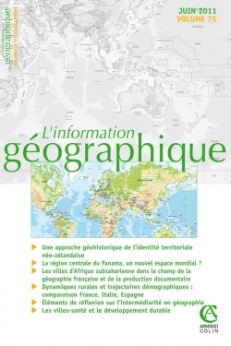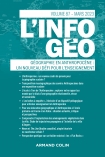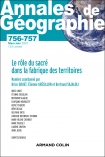
L'information géographique - Vol. 75 (2/2011)
Pour acheter ce numéro, contactez-nous
Recevez les numéros de l'année en cours et accédez à l'intégralité des articles en ligne.
Dans le champ de la géographie française au XXe siècle, les villes d’Afrique ont été longtemps négligées. L’article expose et analyse cet état de fait, en détaillant le cas des études malgaches. Celui-ci permet de montrer que lorsque les villes d’Afrique ont fait l’objet de recherches en géographie, elles ont souvent été étudiées sous des angles ruralistes. Cette vision stéréotypée de l’Afrique urbaine se perpétue dans des productions documentaires à destination d’un public plus large. Dans la géographie scolaire, si la place générale de l’Afrique est en régression, l’Afrique urbaine est bien présente, mais avec une focalisation sur la pauvreté et le secteur informel. Toutefois, depuis les années soixante-dix, la géographie scientifique s’est départie de ces préjugés anciens, a élargi ses thèmes d’études et s’intéresse désormais à un champ très large, rattrapant son retard sur d’autres sciences humaines et sociales.
During the XXth Century, African Subsaharian cities have long been neglected by the French Geography for various reasons. The paper’s object is devoted to analyse this situation, more specifically as far as Malagasy studies are concerned. When African cities have been studied by geographers, it was often according to rural or backward-looking points of view which delivered an exotic and altered image of them. This stereotyped vision of urban Africa is also present in documentary productions intented to a wider audience. In school geography, in which the study of Africa is generally on the decline, urban Africa still has a place in the programs but the main focus is devoted to poverty and informal economy. Nonetheless, since the seventies, most of the scientific geography has left apart these old prejudices and has extended the studied themes. Ever since, French urban geography about Africa has been catching up with the other social sciences and now deals with a very large field. Though, some themes such as modernity or social elites remain understudied, whereas some papers still convey urbaphobic ideas.

